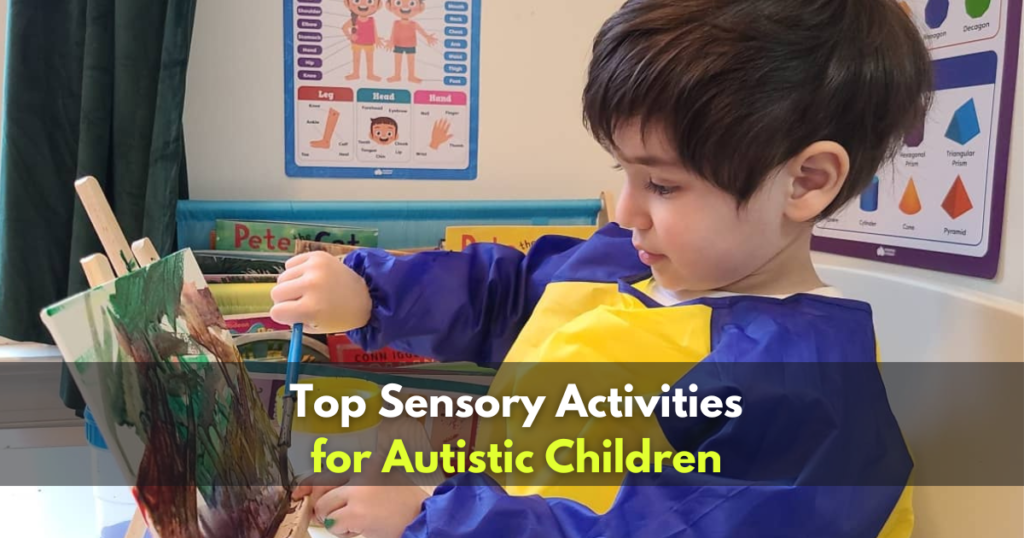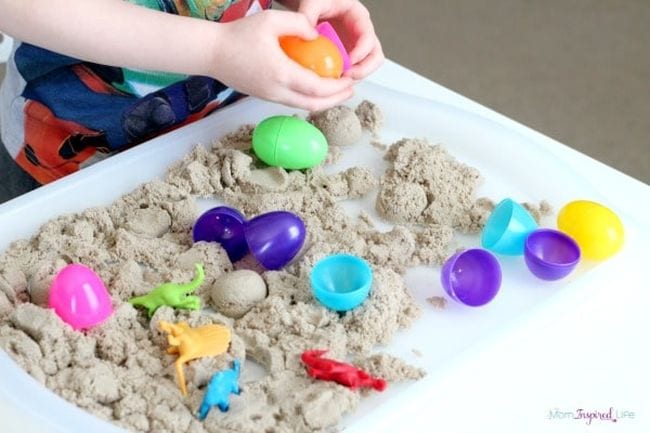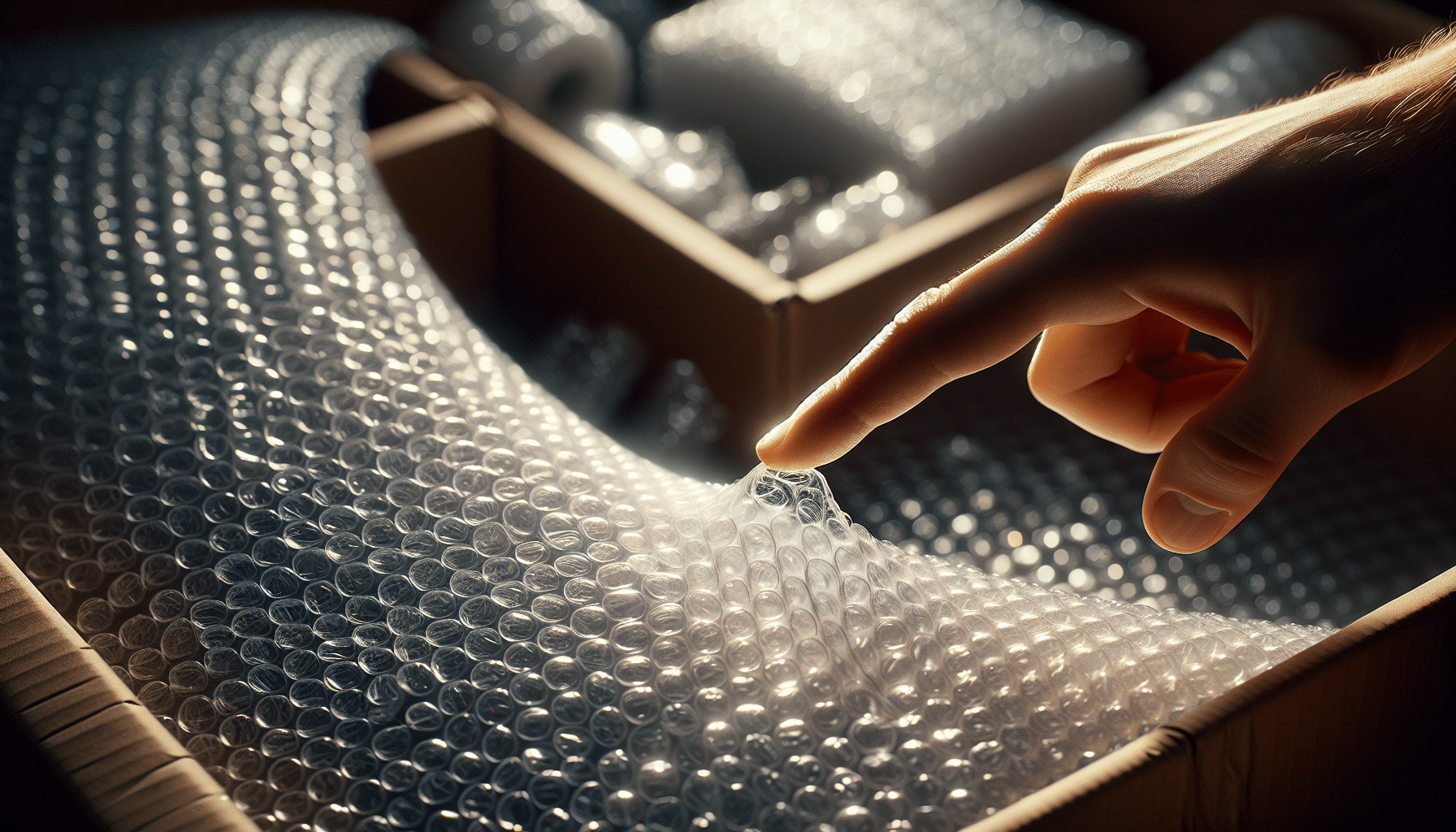Sensory activities are a powerful tool in supporting the development and well-being of children with autism. These activities are designed to stimulate the senses—touch, sight, sound, taste, and smell—in a controlled, structured way that helps children explore and engage with their environment. For autistic children, sensory experiences can sometimes be overwhelming, but engaging in sensory activities allows them to process sensory input in a way that feels safe and calming. These activities can promote relaxation, improve focus, and help children manage their sensory needs more effectively.
An autistic child is someone who falls on the autism spectrum, a developmental condition that affects communication, social interaction, and behavior. Autism spectrum disorder (ASD) is often associated with sensory processing differences, which means autistic children might be either hypersensitive or hyposensitive to certain stimuli. This makes sensory activities particularly beneficial as they provide structured sensory input that is tailored to the child’s specific needs, helping them better navigate the world around them.
By incorporating sensory activities for an autistic child into their daily routine, parents and caregivers can offer positive, enjoyable experiences that support sensory regulation, emotional stability, and overall developmental growth. These activities can vary from tactile play with different textures to visual and auditory stimulation that helps children remain engaged and calm.
Benefits of Sensory Activities for Autistic Children
Engaging in sensory activities provides a range of benefits, especially for children on the autism spectrum. Here are the main advantages:
- – Improves Sensory Processing: Sensory activities assist autistic children in understanding the sensory information they encounter, enhancing their responses to various stimuli in their surroundings.
- – Promotes Relaxation: Many sensory activities, like water play or using weighted blankets, have calming effects that help children cope with anxiety, stress, or sensory overload.
- – Enhances Focus and Attention: Activities that engage the senses in a controlled manner can aid autistic children in boosting their focus and concentration, enabling them to participate more fully in tasks and interactions.
- – Encourages Motor Skill Development: Tactile sensory activities, such as playdough or sensory bins, improve both fine and gross motor skills, enhancing hand-eye coordination and dexterity.
- – Supports Emotional Regulation: Sensory activities can assist children in self-regulating their emotions by providing a structured way to process sensory input, which can help prevent meltdowns or emotional dysregulation.
- – Improves Social Skills: Group sensory activities can foster cooperative play, turn-taking, and communication, aiding autistic children in developing social interaction skills in a relaxed setting.
- – Boosts Creativity: Activities like finger painting or building with textured materials ignite creativity, allowing children to explore and express themselves in imaginative ways.
- – Provides Predictable Structure: Sensory activities create routines that are repetitive and predictable, which can be especially comforting for autistic children who thrive on consistency and structure.
- – Increases Body Awareness: Physical sensory activities, such as walking on various textures or playing with weighted objects, help autistic children become more aware of their bodies and how they navigate through space.
- – Encourages Independence: Through sensory play, autistic children learn to explore and engage with their environment more independently.
Sensory and Calming Indoor Activities for Autistic Children
Sensory activities are important for many children with autism. This is because it helps regulate emotions and feel grounded in one’s environment. These activities focus on feeling calm and helping to soothe the mind and emotions.
1. Sensory Bins for Tactile Exploration
A favorite indoor activity for an autistic child is creating a sensory bin. This fun project can be tailored with materials like dried beans, sand, or rice, offering various tactile experiences. By adding small toys, spoons, or even toy animals, the activity becomes focused and soothing. Sensory bins encourage autistic children to explore their sense of touch, fostering relaxation and concentration through repetitive, calming motions.
2. Calming Play with Kinetic Sand
Kinetic sand is an enchanting material that’s ideal for sensory play. Unlike regular sand, it maintains its shape when molded yet easily crumbles apart. This unique texture provides a satisfying tactile experience. Your child can shape, squeeze, and break it apart during their indoor playtime. It stands out as one of the most captivating indoor activities for an autistic child because the soft, flowing sand delivers a gentle, calming sensation, perfect for kids who love hands-on tactile experiences without creating a mess.
3. Water Play in Small Tubs
If your child loves water, setting up a small indoor water play station can be very helpful. You can fill a basin or tub with water and include floating toys, sponges, or funnels for pouring and splashing. Water play provides both tactile and visual stimulation, allowing for repetitive, soothing movements that many autistic children find comforting. This gentle sensory experience can aid in emotional regulation, making it an excellent sensory indoor activity for an autistic child.
4. Finger Painting for Creative Expression
Finger painting is a fun and slightly messy sensory activity that can engage your child. The smooth, slippery feel of paint on their fingers can be both stimulating and calming. Allow them to create freely with vibrant colors, encouraging exploration of different strokes and patterns with their hands. This interactive indoor activity is particularly beneficial for autistic children, fostering creativity while providing a strong tactile experience. Additionally, finger painting can aid in developing fine motor skills and sensory regulation.
5. Bubble Wrap Popping for Tactile Fun
The simple pleasure of popping bubble wrap is timeless, making it a delightful sensory activity for your child. Many autistic children find joy in repetitive actions, and the tactile and auditory feedback from each bubble popping can be very satisfying. You can place a sheet of bubble wrap on the floor for your child to stomp on or provide smaller pieces for them to pop with their fingers. This quick and easy indoor activity requires minimal preparation, making it perfect for an autistic child.
6. DIY Sensory Bottles for Visual and Auditory Stimulation
Making DIY sensory bottles is an enjoyable way to provide visual and auditory stimulation. Fill clear plastic bottles with water, glitter, beads, and small toys. When shaken, the contents create soothing movements and sounds for your child to observe and listen to. The gentle swirling of glitter and objects can be captivating, making this one of the most calming indoor sensory activities for an autistic child. Plus, you can easily customize the bottles to reflect your child’s favorite colors or themes.
7. Scented Playdough for Multisensory Play
Playdough is a timeless sensory activity, and adding scents can make it even more captivating for autistic children. You can incorporate scented essential oils or spices to create personalized playdough that engages both their sense of smell and touch. The soft, squishy feel of playdough, paired with delightful scents, can offer a grounding sensory experience. This indoor activity not only boosts tactile skills but also aids in sensory integration, particularly for children who thrive on multisensory input.
8. Listening to Calming Sounds or Nature Noises
Many autistic children respond positively to auditory sensory input, making sound-based activities an excellent choice. You can foster a calming atmosphere by playing nature sounds such as rain, ocean waves, or birds chirping. Alternatively, white noise or soothing music can assist your child in focusing and relaxing. This is one of the more passive indoor activities for an autistic child, ideal for moments when they need to unwind or cope with sensory overload.
9. Texture Walk with Bare Feet
A fun way to provide a unique sensory experience is by creating a texture walk. Arrange various materials like soft rugs, bubble wrap, foam pads, or even grass-like mats for your child to walk on barefoot. This allows for different tactile sensations through the soles of their feet. Walking on diverse textures can help your child become more at ease with various types of physical stimuli and is a fantastic indoor sensory activity for an autistic child who enjoys movement and exploration.
10. Glow Stick Bath for Visual Relaxation
If your child loves water play, think about adding glow sticks to their bath for a visually stimulating experience. Dim the lights, fill the bath with water-safe glow sticks, and let your child revel in the soft, glowing colors. The blend of water and light creates a calming environment that can soothe an overstimulated child. This kind of sensory play provides both visual and tactile stimulation, making it one of the most relaxing indoor activities for autistic children.












